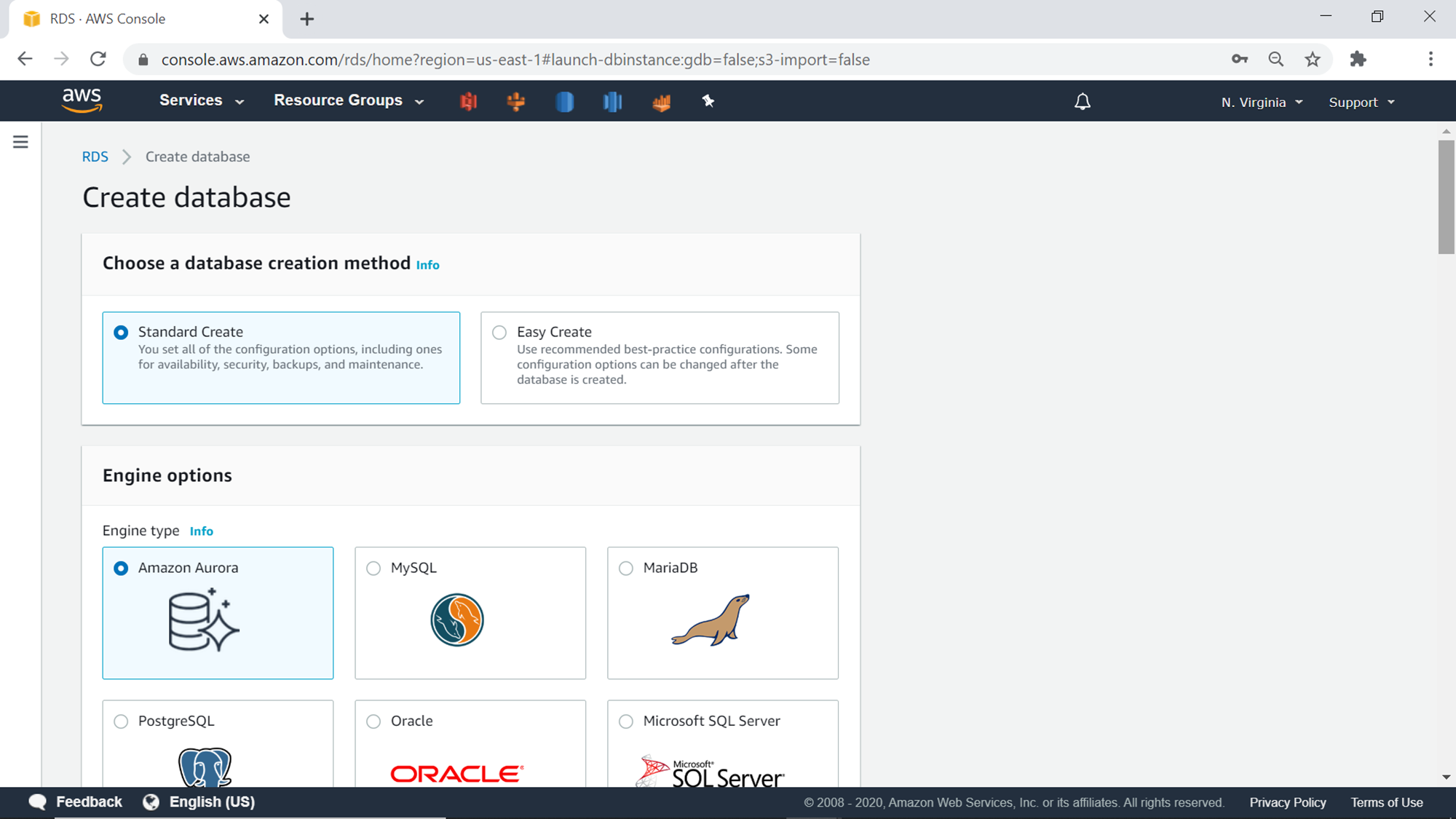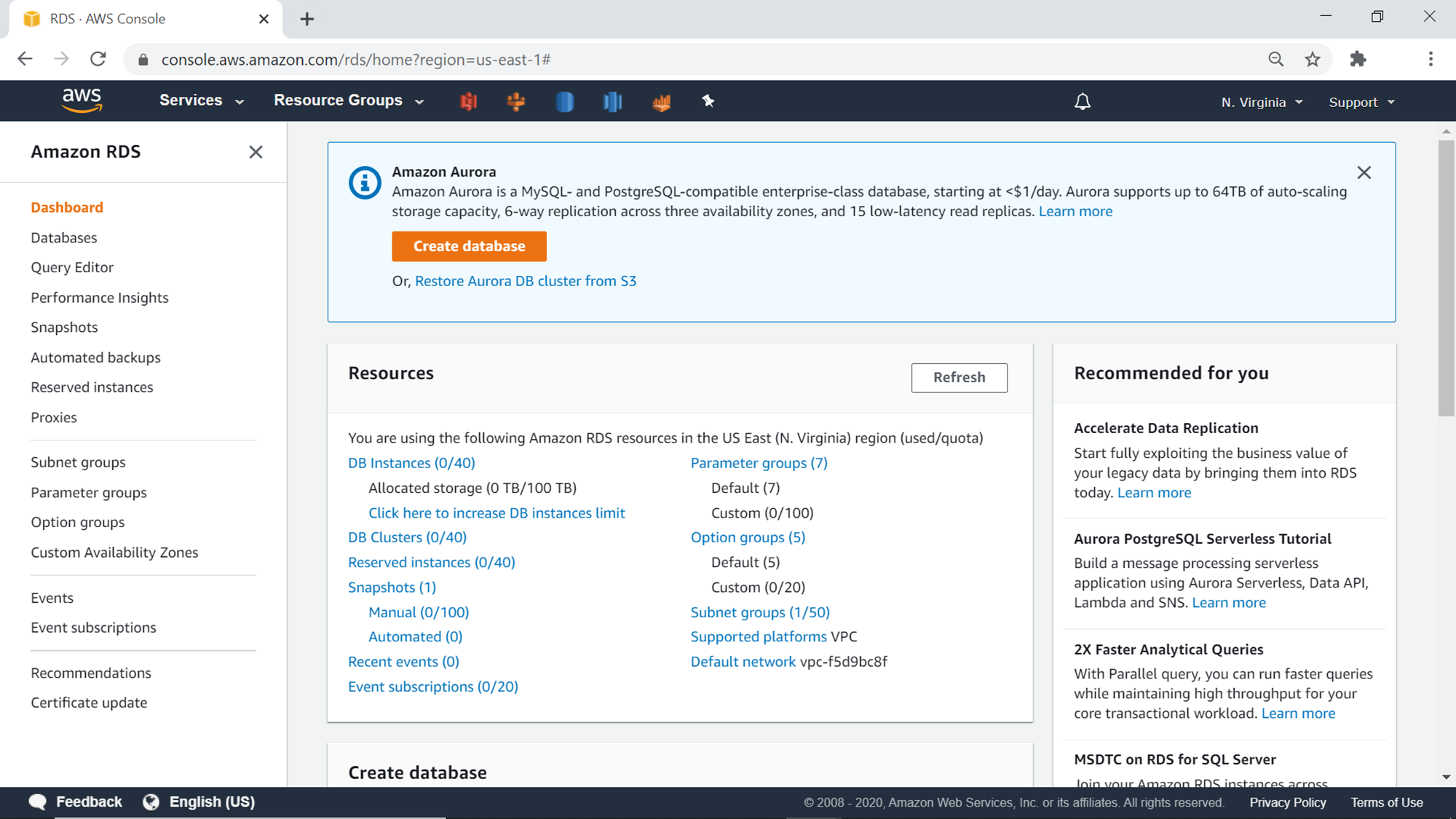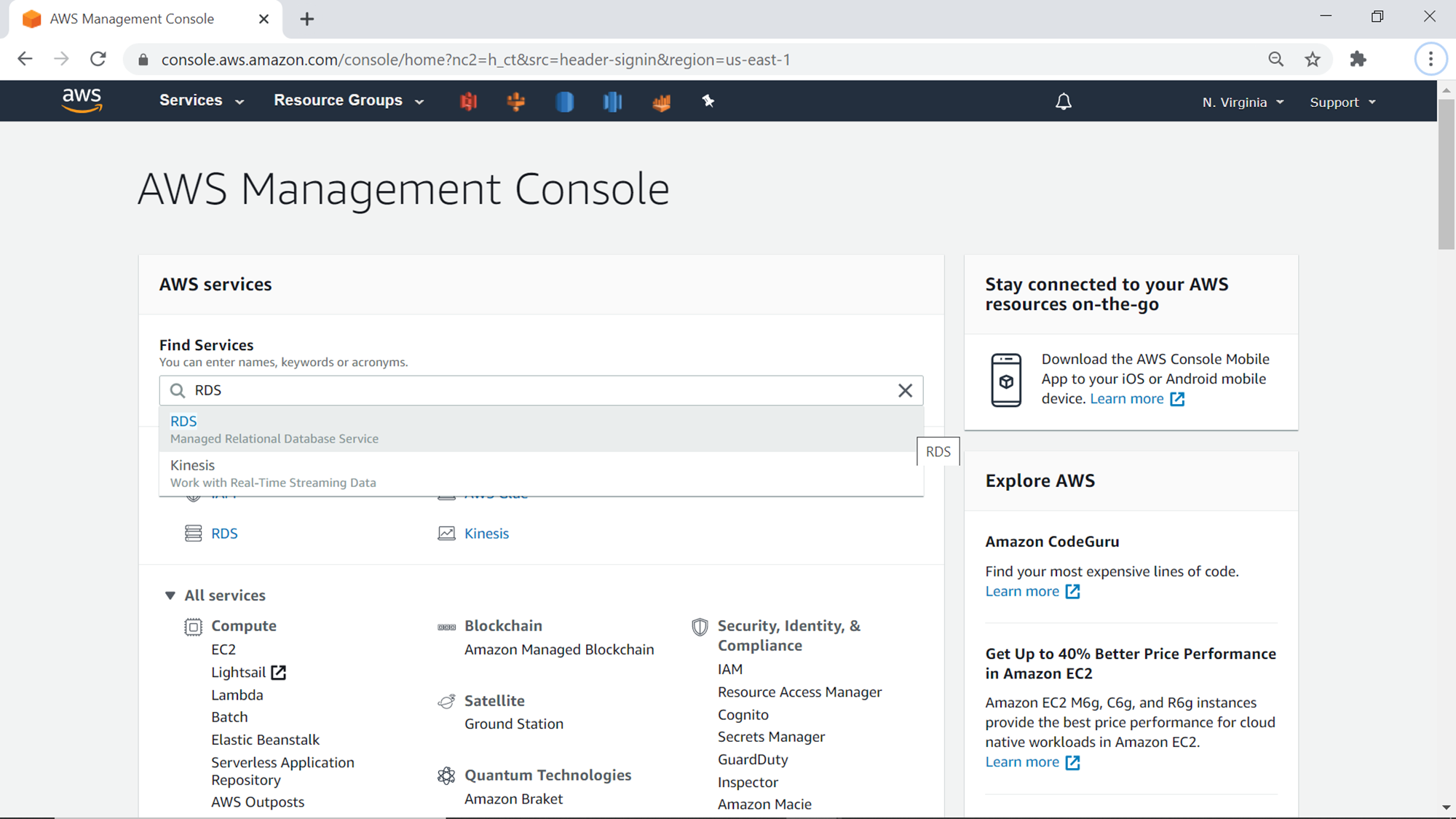Introduction
AWS RDS Aurora is an AWS native relational database that is compliant with MySQL as well as PostgreSQL, and a fully managed database service. It is available in an instance sized model as well as a serverless model. It is available for deployment as a single region as well as a multi-region database. Considering the various features and compliance it offers with above mentioned open source databases, it is a very promising migration candidate for those who intend to migrate from open source databases to cloud-native databases without losing compatibility or having to re-work the entire database and connected systems. In this article, we will learn how to get started with the AWS RDS Aurora DB cluster and create a new Aurora database instance.
AWS RDS Aurora Setup
Aurora is one of the six databases offered as part of the AWS RDS database offerings. So, we need to first navigate to the AWS RDS homepage. Open the AWS Management Console, and type AWS in the search console. It would show the AWS RDS Service link as shown below. Click on that to navigate to the AWS RDS Dashboard page.
Once you land on the dashboard page, it would look as shown below. Generally, there would be an informational message showing that Aurora is a MySQL and PostgreSQL compatible database, with a Create database button to start creating the database from the dashboard page itself. You can click this button or you can click on the Database Instances link in the Resources section.
Clicking on any of the options would land you on the create database wizard. The first option to select on this wizard is whether one would like to use the Standard Create option or the Easy Create option. The Standard Create option provides options to configure and customize all the details to configure the AWS RDS Aurora cluster, while the Easy Create option uses recommended settings for most of the options. Advance users generally go with the Standard Create option, which is the default option as well. We will select this option as we intend to explore all the settings to create the cluster.

The next step is the Engine options. As we intend to create an AWS RDS Aurora cluster, we would select Amazon Aurora as the Engine. Aurora engine comes in two editions – MySQL compatible and PostgreSQL compatible. The topology and architecture of Aurora remain native of Aurora, but the database engine remains compliant with the selected edition. This enables users to use their existing MySQL or PostgreSQL tools with the Amazon Aurora engine and still benefit from the additional features that Aurora provides on the top of these database engines. Select the edition of your choice.
#aws rds #mysql


